Explore the best places
Results for Mosteiro dos Jerónimos in Portugal
Jardim da Praça do Império
- country
- leisure
Praça do Império
1400, Lisboa
This garden is placed in the confluence of three great monuments: the Belém Cultural Centre (CCB), the Jerónimos Monastery and the Planetary. Its beauty is due to the harmony of the dispositions and architectonical plan, being that it was planed accordingly to the Greek and Roman gardens. It has lawns, benches and, at the centre, the luminous fountain, that offers a show of lights and colour.

Igreja da Misericórdia de Fornos de Algodres / Igreja de Nossa Senhora dos Remédios
- heritage
Largo da Misericórdia
6370-145, Fornos de Algodres
Temple dating from the 17th century, with a single nave and a facade of moth johannite Baroque. Inside, are the images and the ceiling of the main altar, with 36 paintings of Saints and other symbols still sanctified of martyrs of the primitive Church. Oil paintings by master Jerónimo da Cunha, dating back to the 18th century. Highlights also include the gilt.
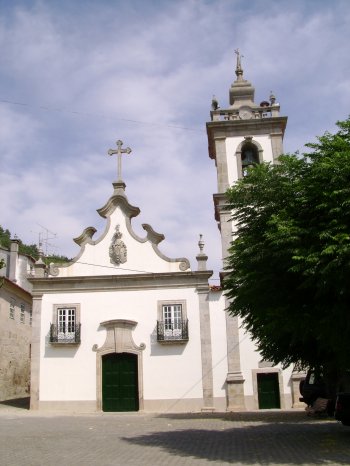
Sé Velha de Coimbra
- heritage
Largo da Sé Velha - Rua do Norte, 4
3000-383, Coimbra
It is one of the most beautiful Romanic Portuguese monuments, with the exterior look of a church-fortress. The Cloister, from the XIII century, was the first gothic style work done in Portugal, after the Mosteiro de Alcobaça. Worthy of notice are the Especiosa Doorway, the Sacramento Chapel, both by João de Ruão, not forgetting the gothic tombs nucleus and the Seville’s glazed tiles.
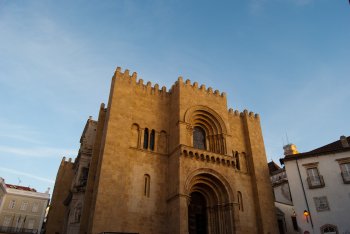
Aldeia Galega
- country
- heritage
Aldeia Galega
2580, Aldeia Galega
A village with curvy, narrow streets, located between the Montejun to-Sintra mountains and the springs of the Alenquer Brook. It boast several vestiges of different civilizations: a roman road with abridge, the friars pathways to the convents of São Jerónimo do Mato and Santo António de Charnais and the medieval Galician road. One may also visit the ruins of the palace of Dona leonor (the place where the queen rested whem she went to the thermae of the Caldas da Rainha), the pillory, the church of Prazeres and the chapel of the Espírito Santo (Holy Spirit). A special note to …

Carris Tour
- heritage
Baixa Lisboeta
1100, Lisboa
The Carris offers two alternative touristic circuits, in double-deckers: The Tejo and the Orient Express circuits. They both start in Praça do Comércio and have an interpreter guide. The passengers may leave the bus whenever they want to visit any particular place they are interested in and, then, return to the circuit again. The Tejo circuit runs through downtown and the historical area of Belém, where you can see monuments such as Jerónimos Monastery, Belém Tower and Padrão dos Descobrimentos (stone monument of the Portuguese discoveries). The walk, with 14 stops, lasts about an hour and a half. The Orient …

Capela de Nossa Senhora de La Salette
- heritage
Oliveira de Azeméis
3721-909, Oliveira de Azeméis
This was the first temple built in Portugal for the worship of this saint. It is located on top of a hill in La Salette Park, a wooded area with romantic gardens and a lake, bandstand and fountain. Religious building, with a neo-medieval character, built at the end of the 19th century by António Correia da Silva (architectural project), Henrique Moreira (façade sculpture), Ricardo Leone (stained-glass windows) and Jerónimo Monteiro da Costa (park project).

Parque Verde de Alcobaça
- country
- leisure
Alcobaça
2460-492, Alcobaça
O Parque Verde de Alcobaça situa-se na entrada nascente da cidade, preservando os antigos caminhos da água para o Mosteiro de Alcobaça. Com uma área de mais de seis hectares, é um espaço de lazer que permite a prática de exercício, atividades ao ar livre e a realização de eventos.
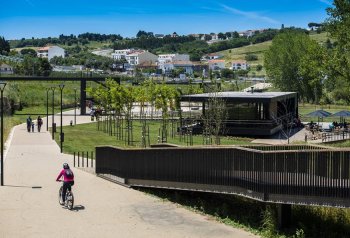
Paço Real da Vila / Paço dos Henriques
- heritage
Praça da República
7090-026, Viana do Alentejo
This is a 13th century building which was completely altered on the 14th century in order to São Jerónimo chapel be installed here. It has a plan composed by two elements articulation in rectangular plan perpendicularly disposed. The portico stands out and a small square opening on the basements and three windows with Manueline frames, of which one is a bay window. It is also worth to mention the stile stairs which give access to a small portico.
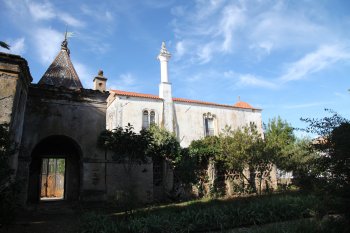
Museu José Luciano de Castro
- heritage
Rua Doutor Alexandre Seabra, 29
3780-230, Anadia
A museum that belongs to the Anadia's Santa Casa da Misericórdia and is located in the manor where José Luciano de Castro (1834-1914), the leader of the "Progressive Party" and a remarkable statesman of the liberal monarchy, once lived. It contains the collection that was donated during his life and later by his relatives to the Anadia's Santa Casa da Misericórdia, namely family and persoanl objects. A special note to the retable panels of Saint Jerónimo and Saint Helena.
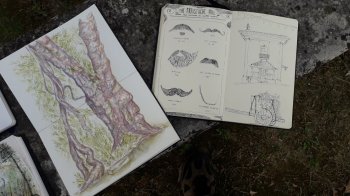
Rendas de Semide
- leisure
EN 17-1
3220, Miranda do Corvo
As rendas de Semide eram utilizadas no século XII pelas monjas beneditinas para ornamentar altares e paramentos nas festas religiosas. São feitas com uma agulha de arame, em fios de algodão, preso ao ombro num pequeno búzio. Segundo a tradição, a origem destas rendas está associada ao Mosteiro Beneditino que, em 1183, foi construído nesta localidade.